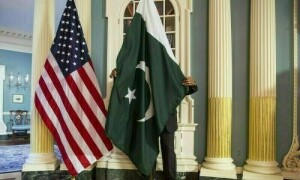Until a year ago, 10-year-old Kavita wandered barefoot through the bazaars of Umerkot in Sindh — a begging bowl in her small hands as she walked beside her mother. Now, she walks to class each morning with a school bag on her back — part of a quiet but powerful education shift transforming one of Sindh’s most historically excluded communities, the Jogis.
“I used to beg,” Kavita tells Eos. “My sister still does, but now I go to school.”
The fifth of seven siblings, Kavita was born in abject poverty. Her father works mostly as a snake charmer, but takes up odd jobs to survive, similar to most members of the small Jogi community. On most days, her mother spends long hours in the bazaar seeking alms. “Now, my father tells us to study, so we won’t need to beg,” Kavita adds softly.
NOMADIC PAST, UNCERTAIN FUTURE
‘Jogi,’ derived from the Sanskrit ‘Yogi’, often connotes hermitage. Here, however, Jogi refers to the community. While mostly Hindus, the Jogis are not formally listed in Pakistan’s Scheduled Castes.
The Jogis trace their roots to the Rajasthan’s Barmer district in India. Before Partition, they moved seasonally across the Thar desert, working as snake charmers, palmists and fortune tellers. After the 1965 war, many settled permanently in Sindh, especially Umerkot.
In Umerkot’s Jogi Colony, where girls’ literacy was nearly non-existent, 65 girls now attend daily classes. Their journey from bazaars to blackboards reveals both Pakistan’s education challenges and its most hopeful solutions…
In 1977, then-Prime Minister Zulfikar Ali Bhutto allotted them land that is now known as Jogi Colony. However, powerful local landlords encroached on parts of it, forcing many families to scatter across Umerkot and its surrounding villages. Today, around 700 households remain in the Jogi Colony.
Most live in poverty, with six to 12 children per household. While exact figures are unavailable, child literacy is estimated at under five percent — and nearly non-existent among girls.
“We used to live in jungles, chanting mantras to control snakes,” recalls Sattar Jogi, an elderly man. “People called us saints, but we often went hungry.”
SHACKLED DREAMS
While some older Jogis still work as snake charmers or fortune tellers, many now work as daily labourers, seasonal farmhands, or learn embroidery and mobile repair. The younger generation dreams of modern skills and digital work.
Yet most Jogi children, even in Umerkot, struggle to access education. This is despite the city offering much better educational opportunities compared to surrounding areas. Nationally, about 26.2 million children — approximately 39 percent of Pakistan’s school-age children — are out of school. The corresponding number for Umerkot is around 38 percent, compared to 45 percent in Tharparkar, with the number being much higher among nomadic groups.
Umerkot has also become known for quality private schools and colleges. Each year, dozens of students qualify for seats in medical and engineering universities.
But, as one local teacher points out, these achievements don’t reflect the entire picture. “Privileged children reap these benefits,” says Saveeta Meghwar, a teacher at Dhano Jogi Non-Formal Education Centre (NFEC). “Nomadic communities — Jogis, Kolhis, Bheels and Rebaris — are left behind,” she tells Eos.
A WINDOW FOR THE EXCLUDED
Last year, the Sindh government announced the setting up of 3,000 primary schools as part of their Non-Formal Literacy Education (NFLE) project, carried out by the semi-autonomous Sindh Education Foundation (SEF). So far, 229 non-formal education centres (NFECs) have been launched in five districts of Sindh, including Umerkot, targeting children historically excluded from formal schooling.
So far, 12 such NFECs have been set up in and around Jogi settlements of Umerkot. “The vision is no child left out,” says Sanjay Mathrani of the SEF. “Through our formal and non-formal hubs, we now reach over two million out-of-school children across Sindh, giving them a chance to learn, dream and belong,” he tells Eos.
In Umerkot’s Jogi Colony, the SEF runs the school with a local implementing partner, the Thar Education Alliance (TEA). Today, it has 182 children, including 65 girls, attending classes daily from 8am till noon, so children can still help at home or work later.
It helps that the TEA has members of the Jogi community working for it, including 33-year-old Nagesh Jogi, who is the vice principal. Unlike his elder brothers who stopped after class five, Nagesh finished is a graduate. Today, he earns around Rs20,000 per month.
“Convincing the parents remains the hardest part — because tradition values daily income over long-term schooling,” Nagesh explains to Eos. Determined to change thinking, Nagesh declared he’d marry his son only to a literate girl. Inspired, one family supported their daughter Haryan Jogi, who became the first Jogi girl in the colony to do her intermediate. She is currently a teacher at the same school.
FAST-TRACK CURRICULUM
With seasonal migrations still a component of Jogi lifestyle, a large number of children are often unable to consistently attend school. To mitigate that, the SEF has developed accelerated learning modules, condensing five years of primary education to be taught over 12 months — with small classes, local teachers and flexible hours. The NFECs also track progress, using baseline tests, attendance and community feedback.
“In six months, these children — who’d never held a pencil — caught up with their peers who were years ahead,” says Partab Shivani, who heads the TEA. “It shows no child is unreachable if we change the approach,” he tells Eos.
Shivani adds that the SEF had tested similar models earlier in Tharparkar and Badin, helping Kolhi and Bheel children transition to formal schools. Currently, new modules are being designed to prepare the children for middle school, he adds.
These non-formal centres also teach embroidery, sewing and basic computer skills, providing older youth to gain literacy and vocational skills. Meanwhile, girls who progress to classes 11 and 12 can get stipends — already being provided in formal schools — to encourage them to stay.
By bringing schools to the heart of the community and putting familiar faces at the blackboard, the project is quietly breaking cultural barriers and showing parents that education doesn’t mean abandoning tradition, but strengthening it.
HEADS HELD HIGH
The impact of education is already visible among the children, with one child telling Eos that they were used to having doors shut in their faces as they went from house to house to beg. “Now when we walk to school carrying books, even neighbours greet us,” he tells Eos.
Every morning, Kavita and many other likes her make a beeline for the school, while discussing their dreams during the short walk. Kailash, only 14, dreams of starting a small school so other Jogi kids won’t have to beg.
As they cross a quiet alley, 90-year-old Gorakh Nath, wearing earrings and prayer beads, plays his flute beside a swaying snake. “For the first time, my five grandsons and three granddaughters are studying,” he says, eyes moist. “Maybe in ten years, things will truly change,” he tells Eos.
For Kavita, her books and pencils are the new tools. No longer do they have to spend hours making snake baskets and capturing venomous cobras. “Now, I don’t just survive. I belong,” she says.
The writer is Dawn’s correspondent in Umerkot, Sindh. X: @allahbux
Published in Dawn, EOS, July 27th, 2025













































